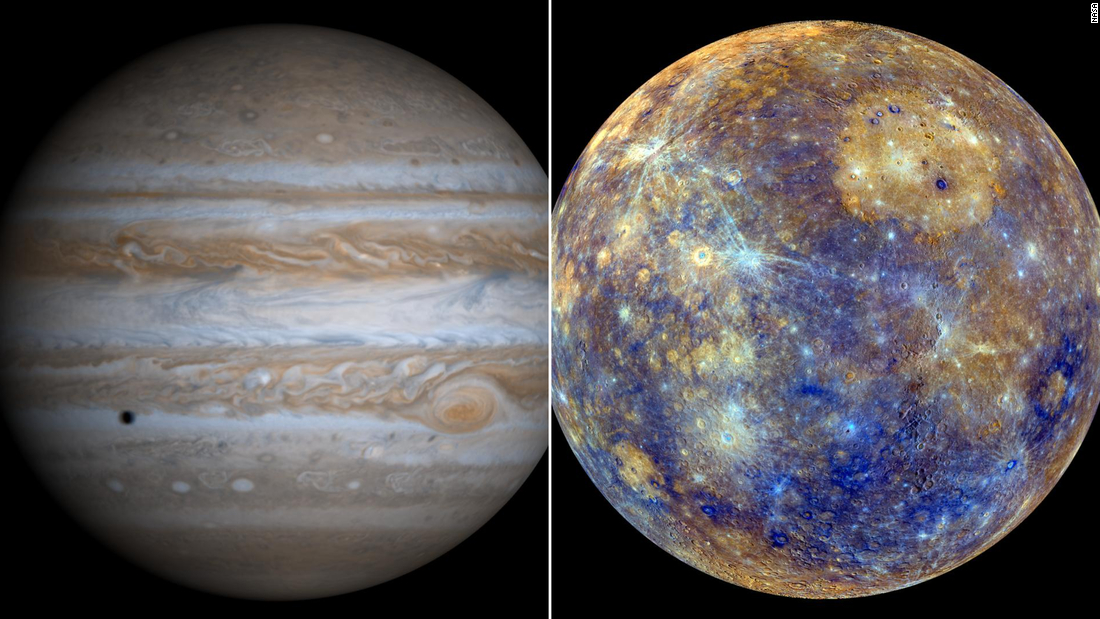
A conjunction is when two objects appear close to each other in the sky, but they could, in fact, be millions of miles apart, according to Thomas Beatty, assistant astronomer at Steward Observatory at the University of Arizona in Tucson.
It’s similar to a merry-go-round, he said, with certain animals lining up as they circle the center of the ride.
To the naked eye, the planets look like two bright stars, Beatty said.
Asteroid Apophis flyby
When the asteroid was first discovered in 2004, scientists thought the asteroid had a slim chance of hitting Earth in 2029, Beatty said.
There was a one in 10,000 chance that the asteroid would collide with Earth, but given the damage it would do, “one in 10,000 is more or less unacceptable from our human point of view,” he said.
Fortunately, the Apophis flyby in 2013 allowed scientists to collect better measurements, and the new numbers show the odds are extremely low, Beatty added.
He said the large asteroid will still pass close by in 2029 – about 24,000 miles from Earth, according to EarthSky – and it will be easier to see in the sky compared to the flyby in 2021.
Meteor showers
The Eta Aquariids follow shortly after, peaking on May 5, when the moon is 38% full. This shower is best seen in the southern tropics, but will still produce a medium shower for those north of the equator.
The Delta Aquariids are also best seen from the southern tropics and will peak between July 28-29, when the moon is 74% full.
Interestingly, another meteor shower peaks on the same night – the Alpha Capricornids. While this is a much weaker shower, it has been known to produce some bright fireballs during the peak. And it will be visible to those on either side of the equator.
The most popular of the year, the Perseid meteor shower peaks between 11 and 12 August in the Northern Hemisphere when the moon is only 13% full.
- October 8: Draconids
- October 21: Orionids
- November 4 to 5: South Taurids
- November 11 to 12: North Taurids
- November 17: Leonids
- December 13 to 14: Geminids
- December 22: Ursids
Solar and lunar eclipses
A total lunar eclipse will occur on May 26, best visible to those in western North America and Hawaii from 4:46 ET to 9:51 ET.
An annular eclipse will occur on June 10, visible in northern and northeastern North America from 4:12 a.m. ET to 9:11 a.m. ET. The sun is not completely blocked by the moon, so wear eclipse glasses to view this event safely.
A partial lunar eclipse will be seen on Nov. 19, and skywatchers in North America and Hawaii will be able to see it between 1:00 a.m. ET and 7:06 a.m. ET.
And the year ends with a total solar eclipse on December 4. It won’t be seen in North America, but those in the Falkland Islands, the southern tip of Africa, Antarctica and Southeast Australia will be able to see it.
Visible planets
It is possible to see most of this with the naked eye, with the exception of the distant Neptune, but binoculars or a telescope will give the best view.
Mercury appears as a bright star in the morning sky from February 28 to March 20, June 27 to July 16, and October 18 to November 1. It will shine in the night sky from May 3 to May 24 and August 31 to September 21. and November 29 to December 31.
Venus, our closest neighbor in the solar system, will appear in the western sky at twilight from May 24 to December 31. It is the second brightest object in our sky, after the moon.
Mars will appear in the morning sky between November 24 and December 31 and will be visible in the evening sky between January 1 and August 22.
Jupiter, the largest planet in our solar system, is the third brightest object in our sky. It will be visible in the morning sky between February 17 and August 19. Look forward to the evenings from August 20 to December 31 – but it will be brightest from August 8 to September 2.
Saturn’s rings are only visible through a telescope, but the planet itself can still be seen with the naked eye on the mornings of February 10 to August 1 and the evenings from August 2 to December 31. It will be at its brightest between August 1 and August 1. 4.
Binoculars or a telescope will help you spot the greenish glow of Uranus on the mornings from May 16 to November 3 and the evenings from January 1 to April 12 and November 4 to December 31 – but brightest between August 28 and December 31 .
And our most distant neighbor in the solar system, Neptune, will be visible through a telescope on the mornings from March 27 to September 13 and in the evenings from September 14 to December 31. It will be at its brightest between July 19 and November 8.
